Czech Cubism: A Prague Architectural Treat
Early Elegant 20th Century Design Style
By: Mark Favermann - May 31, 2009

Woman Playing the Mandolin by Pablo Picasso, 1909, Museum of Western Art, Moscow

Church Steeples in Old Town, Prague

Astronomical Clock on Old Town Hall in Old Town, Prague, 15th to 17th Century.
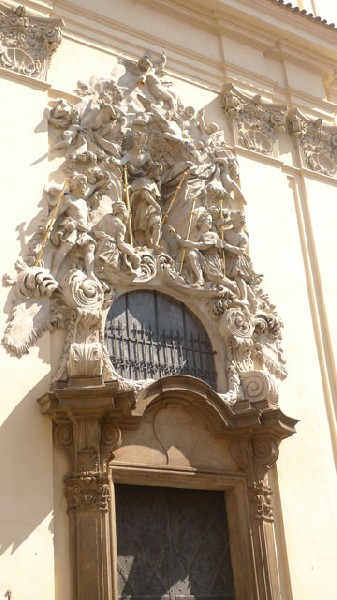
Baroque Church Entrance, Prague
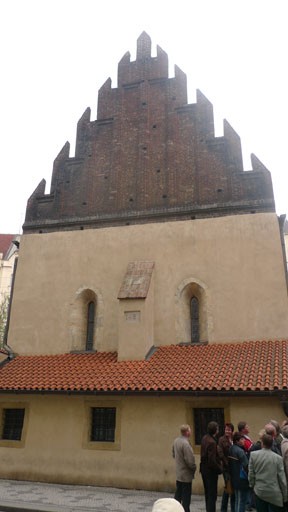
AltNue Synagogue, Prague, c.1270, Gothic design

Hodek Apartment House by architect Josef Chochol, 1913-14,
30 Neklanova Street, Vysehrad Neighborhood, Prague
Photos by M. Favermann
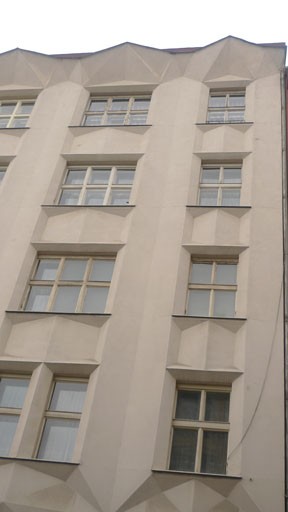
Hodek Apartment House, Prague

Hodek Apartment House Details, 1913-14, Prague
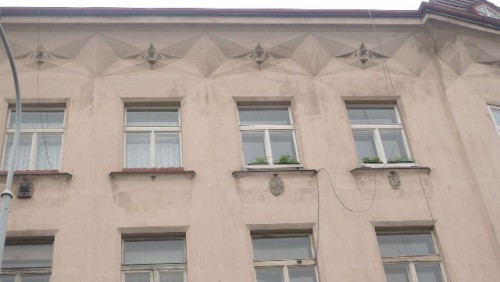
Distinctive Cornice on Vysenrad Apartment House by Antonin Balada (1913), 2 Neklanova Street, Prague

Apartment Building By Josef Chochol (1912-13), Prague



Kovarovic Villa by Josef Chochol (1912-1913), Prague


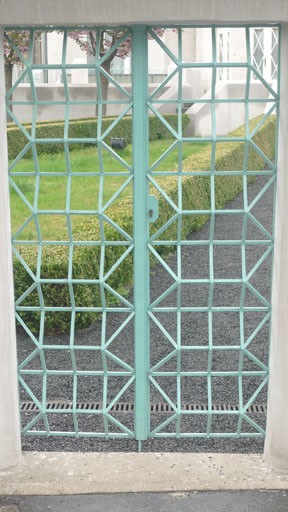
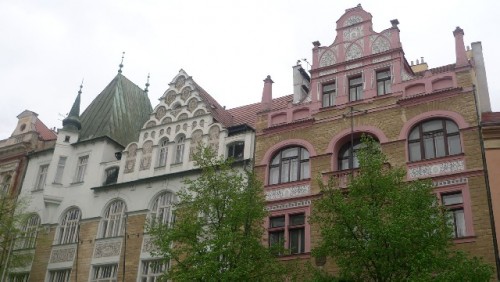
Buildings on nearby block to Koranovic Villa
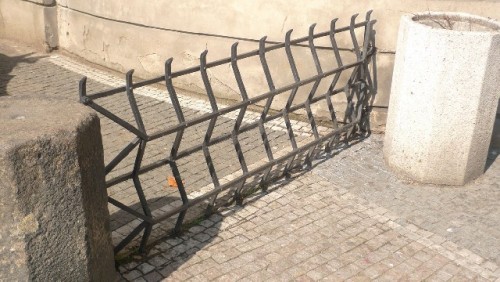
Railing by Unknown Designer, Perhaps by Someone in the Town Planning Office, Old Town Square, Prague (1912)
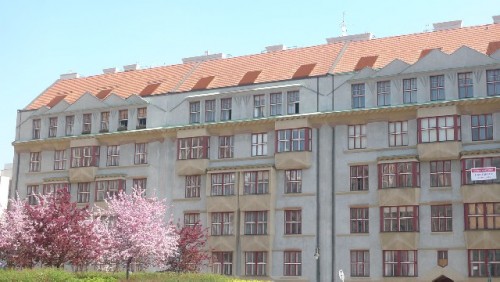
Cooperative Housing (1919-1921) by architect Otakar Novotny, Old Town, Prague
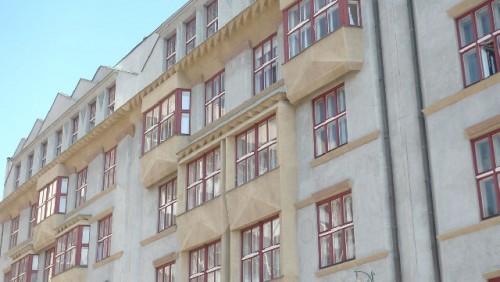
Cooperative Housing Top Floors Details

Doorway Detail, Cooperative Housing

Ornamental Security Gateway, Cooperative Housing, Prague
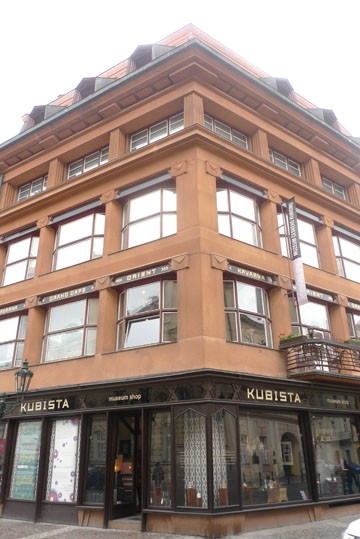
The Black Madonna House by architect Josef Gocar (1911-12), Old Town, Prague

Details for The Black Madonna House by architect Josef Gocar (1911-12), Old Town, Prague

Interior Stair railing by Josef Gocar (1912)

Pieces of Czech Cubist Furniture at Museum of Cubism, Prague
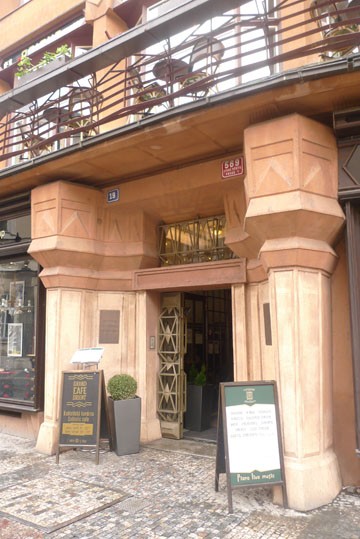
Entrance to The Black Madonna House

Prague is one of the most beautiful cities in the world. Called the Golden City of Spires due to its many elaborate churches, it is also one of the oldest continuous metropolitan areas dating back at least eleven centuries. Its architecture speaks to this history. Gothic Medieval structures were built over Romanesque ones. Gothic buildings and structures with Renaissance Baroque and later Neo-Baroque designs are evident today as are Art Nouveau and even Art Deco structures.
There is a wonderful visual splendor to the city. Prague is literally a magnificent three dimensional collage of textures, facades, ornamentation and architectural details. Variations of these elements, though perhaps not in this abundance, can be seen in other great urban centers throughout Europe. However, there is one architectural style that is unique to Prague. It is Czech Cubism.
Prague's Czech Cubism manifested itself after Pablo Picasso and Georges Braque developed Cubist painting and revolutionized the European art world in the early years of the 20th Century. In Cubist artwork, objects are broken up into geometric pieces, analyzed and reassembled in an abstract form depicted in a multitude of viewpoints. Surfaces may intersect at random appearing angles obscuring a sense of depth.
A major Cubist characteristic is how background and object planes interconnect, overlap and penetrate each other to form shallow often ambiguous space. Czech Cubism is a geometric variation and therefore extension of Cubism.
Czech Cubism focused upon art, sculpture, architecture furniture and accessory designs that contain sharp points, sliced planes and crystalline shapes. Though there were several rather academic Czech painters and sculptors who worked in this style, the true genius of the Czech Cubist movement can be seen in the design of geometrically enhanced building facades, energetic furniture and dynamic decorative objects often with precise black line detailing. A major period of Czech Cubism creativity took place between 1911 and 1914.
The most impressive of the Czech Cubists were four multi-talented designers who had trained at the ateliers of Vienna Secessionist architect/designer Otto Wagner and his student Czech-born Jan Kotera. Both of these men were rationalist architects or architects of realism that were inspired by Braque and Picasso and worked in a style adapted from these painters' Cubist principles. The four Czechs were Paval Janak, Josef Gocar, Josef Cholcol and Vlastislav Hofman. They wished to express the internal energy of an object or building by breaking up the vertical and horizontal surfaces that they felt restrained conventional design.
Czech Cubists wanted to incorporate and stretch angled planes into everyday places and objects. They felt that this allowed a dynamism that made the mundane into works of art. To them, the pyramid was the ultimate architectural design, and the crystal was the ideal natural form. Paval Janak (1888-1956) was the primary theorist of Czech Cubism. He formulated a theoretical framework for architectural Cubism.
Interestingly, at the turn of the 20th Century, Prague's and therefore Bohemia's elite was open to culturally radical ideas and financed the young designers' Cubist transformation. This transformation effected everything from cups and saucers to chairs, tables and other furniture to villas, apartment complexes and office buildings. Thus, nowhere else in the world was Cubism taken so comprehensively. Prague became a Cubist City in part with Cubist apartment blocks furnished with Cubist furniture.
The inhabitants could drink from Cubist cups and eat on Cubist plates. They could put flowers in Cubist vases, tell time with Cubist clocks and read books and magazine in Cubist type under Cubist lamps and light fixtures. Luckily, much of this Cubist legacy still survives throughout various neighborhoods of Prague.
The question to ponder is "why Czech Cubism"? Why did it happen in Prague rather than Vienna Cubism or Budapest Cubism or even London Cubism? It appears that the collage of architectural styles in Prague may be part of the answer. The Gothic Medieval structures gave a somewhat rough geometric presence to the city. This can be seen in some of the houses and commercial buildings still in use in and around the Old Town Square.
Nearby, the Altnue Synagogue stands in the former Jewish Quarter of the Old Town. This quite Gothic rather strange roofed structure has been a Prague landmark since 1270, part of the Middle Ages. Certainly it and other Gothic structures, at least subliminally, influenced the Czech Cubist designers.
Prague's famous Astronomical clock with its intricate clock work and sculpturally enhanced figures as well may have been a subliminal influence. This clock is rather fanciful and structurally sophisticated. It underscores a notion of creativity even though it was constructed in the 15th, 16th and 17th centuries. This is not just a timepiece but a representation of a place in time and cosmic notion of time, man and God. It is also an example of functional design as beautiful structure or object.
As can easily be seen today, there is a plethora of examples of amazing craftsmanship on buildings throughout Prague. From Baroque to Art Nouveau, with different types of ornate enhancement, Czech artisans skillfully and often exquisitely crafted, fabricated, carved and painted elements that have lasted generations and even centuries. These could have certainly influenced progressive-thinking creative minds to reach beyond traditional boundaries and conventional aesthetic dictates.
The Vienna Secessionists with Otto Wagner and Joseph Hoffmann among others also influenced the Czech rationalist designers as well. This Viennese group had developed a geometric form of Art Nouveau. It stylistically emphasized angles and sharp edges and lines. Being part of the Austro-Hungarian Empire made the young Czech designers aware of what design styles were not only fashionable but aesthetically interesting. Period publications and train travel must have allowed for communication of creative thinking and theories.
All of these concepts of various influences are certainly noteworthy, but do not negate the revolutionary, totally radical vision of exploding, interplaying perspective and transformative geometric abstraction of the conventional viewpoint by Picasso, Leger as well as Juan Gris and other lesser painters and sculptors. This vision was probably thrilling for the exploring designers. This was the key for the then young Czech Cubists to create a unique visual statement.
A major Czech Cubist building is the Hodek Apartment House by architect Josef Chochol on Neklanova Street in the Vysschrad Neighborhood of Prague. It was constructed in 1913 and 1914. The Hodek development is a radical application of Cubism. The facade is detailed with crystal shapes; the corner pillar supports a sophisticated cornice. The building still looks very good today. Somehow, this early use of concrete holds up much better than the concrete structures of Brutalist architecture of the 1960's. Staining and deterioration are at a minimum.
Down the street from the Hodek Apartment Building is another Czech Cubist apartment structure that was designed by architect Antonin Belade. It was built in 1913. This building was influenced strongly by Chochol's concept of three-dimensional Cubism. This apartment house has a flat front with a distinctive Czech Cubist cornice treatment. Unlike the Hodek development, this building is in need of care. The Vysehrad Neighborhood seems to be a working class neighborhood with some of its apartment buildings and commercial structures in worse shape than others.
A short block from the Vysehrad Apartment building is a smaller building used for apartments or offices by Josef Chochol. This structure has the crystal elements integrated into its facade and its door as well as its window treatments. There are strong Cubists features in metal security grates and in its far from blank windowless side wall. Nearby in the parallel mixed use commercial/residential street, more traditional Czech buildings demonstrate how radical Czech Cubism must have seemed in the early decades of the 20th Century.
Around the block is the elegant Kovarovic Villa designed also by architect Josef Chochol at 3 Libusina Street. This building and formal front garden are exquisitely kept presenting the high point of Czech Cubism. The facade, the surrounding wall elements including sculptured Cubist metal fence and gateway express an overall visual dynamic in a radical way. Slanted surfaces on the buildings facade , fenestration and cornice reflect the polygonal garden. apparently the garden was made smaller when the embankment road was widened. Somehow, the effect is still visually sensational.
Though there are Czech Cubist buildings and structures as well as gateways, fountains and even a lamppost sprinkled throughout Prague in the New Town area, two notable buildings are located in the Old Town. The Cooperative Houses in the Jewish Quarter of Prague was built for a Teachers union or association after World War I in 1919-1921. It was designed by Otakar Novotny. The first group of Czech Cubist structures was built prior to World War I by 1914. This building was built during a second wave of Cubist design and construction.
The Cooperative Houses were built as part the social planning that can be seen throughout Europe. Unlike other Cubist buildings, the Cooperative Housing project has very colorful facade detailing. This was not typical of the much more monochromatic Czech Cubist style. Today, this building is an upscale residence block located in a posh neighborhood a couple of blocks away from the Altnue Synagogue. Nearly 800 years apart in age, the austere Gothic synagogue's geometry has some visual resonance with the colorful, joyous Cooperative Housing building. Fanciful geometry establish visual character in both facade treatments.
At the Church of Saint Nicholas in Old Town Square is what looks to be an old stone fountain with a surprising short metal fence around it in a clearly Czech Cubist style. This fence railing detail was created by an unknown designer in 1912. It is surmised that this was a person in Prague's town planning office. The mystery is how and why a Czech Cubist ornamentation was allowed in a primarily Medieval ancient square. The stone fountain itself could be centuries old, but the fence railings are quite radically Cubist.
On the other side of Old Town Square is a major Czech Cubist building made of reinforced concrete. This building, the strangely named Black Madonna House, was designed by Josef Gocar in 1912-1913. The austere, brown and earth tone structure has the large windows of the former department store that was originally housed there. It gets its name from a sculpture of a Black Madonna with Child that is installed in the corner of the building. Oddly, the statue was taken from the original more classicist style house previously located there.
Initially, Josef Gocar had designed the building in a Modernist style. However, after 1911, he changed the original plans to add Cubist elements on the exterior facade and the interior including a wonderful Cubist set of stairs throughout the building. The architect added a portal and capitals for the mullions and dormers in Cubist style giving the building a rich ornamental look yet in a sparely designed way. The entrance to the building has a grand presence like an ancient structure, almost evoking an Egyptian or Ancient Greek presence and monumentality.
On the first floor, he created a cafe with a wonderful outside metal grill around the balcony. After many years of neglect and even destruction, the cafe was restored to its Cubist glory in 2005 and now is a popular spot for coffee and meals. On the first floor of the building is a museum shop selling books, posters and reproductions of Czech Cubist items. The remaining floors of the building house the Kubista Museum, Prague's Cubist Museum.
Unfortunately, this museum is, like most of Prague's museums, underwhelming in presentation and object display. The parts are greater than the whole. Included in the museum are several Czech Cubist paintings, sculpture, a few graphic elements and furniture. The paintings and sculpture are mediocre or academic, the printed graphic examples are thin, but the furniture is spectacular.
The Czech Cubist furniture makers of that fecund period just before WWI were skillful and eloquently simple. For some reason, the wonderful Cubist ceramic and glass pieces of the period were missing from the museum leaving a design and cultural hole in the Czech Cubism story. Perhaps, they are all at Prague's Museum of Decorative Arts?
Czech Cubism is a world design and architectural legacy hidden among the riches of Prague's centuries old architecture and design urban collage. It is a totally Czech phenomenon. Despite its founders optimistic theories and creative energy, Czech Cubism did not make a major impact in its own country or internationally. There were less than 50 buildings and significant structures created in this style in Prague, Bohemia and Moravia.
Many of these have been destroyed or dismantled during the last century. This was due in part to the fact that only an outer layer of buildings were created in the Cubist style while the inner structures were created in a more conventional manner. Like any rather rigid structure, strict adherence had to be followed.
In a sense, by the early 1920's, Czech Cubism became an architectural dead-end. It was followed by a Czech variation of Art Deco. However, Czech Cubism was later visually echoed in German Expressionism, in stylized films like Metropolis and in Modernist design's angularity. A revival of interest in it began in the late 1960's.
Czech Cubism is an architectural and design gift bestowed by a group of visionary, utopian designers that had a meteoric rise and fall. Luckily, pieces of this Cubist meteor still exist in and around Prague to be appreciated and from which to learn.
.




























